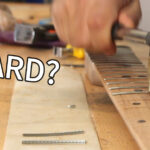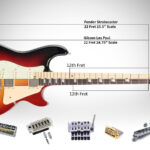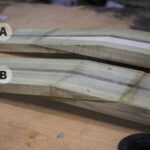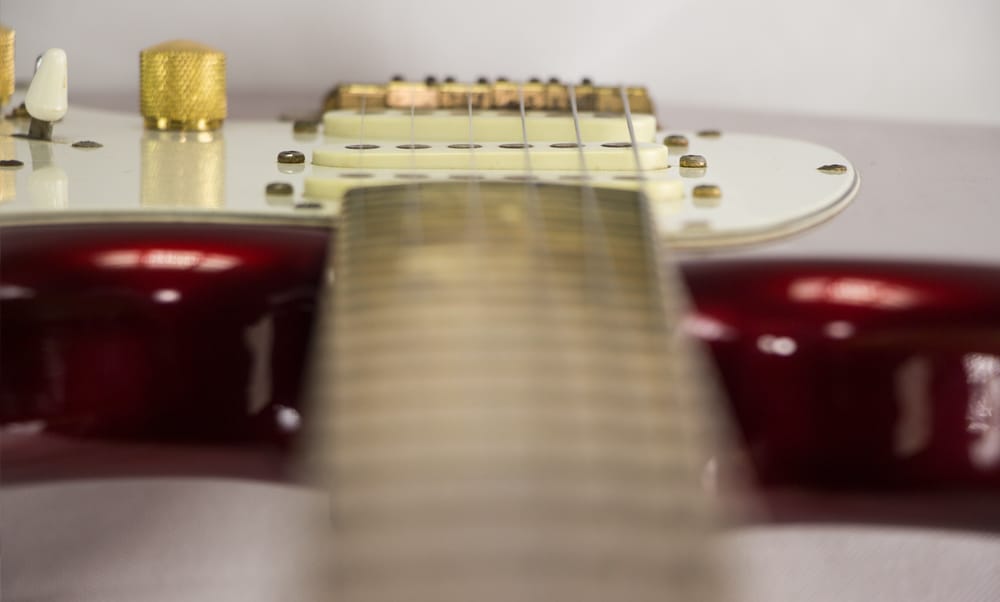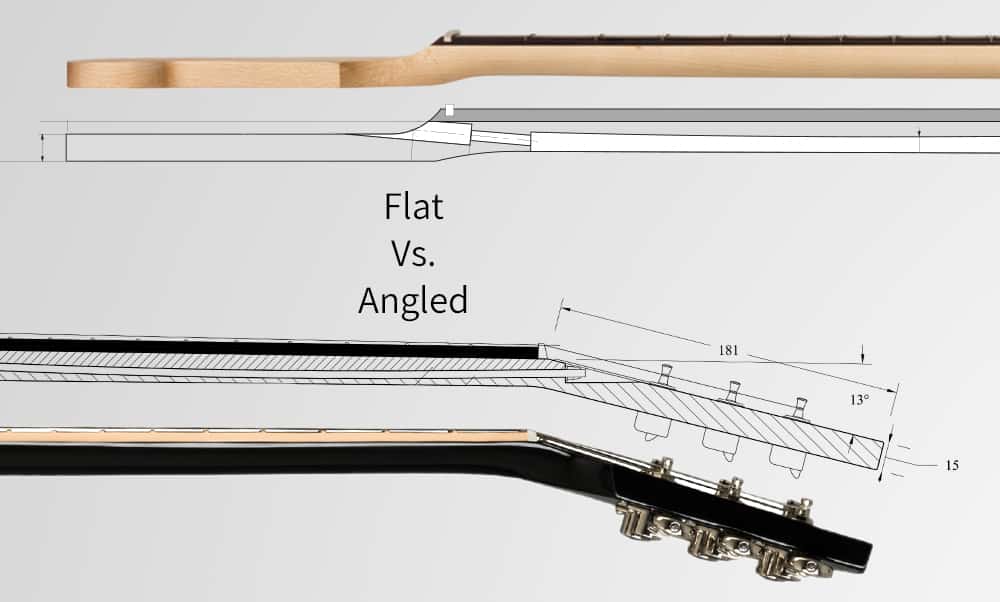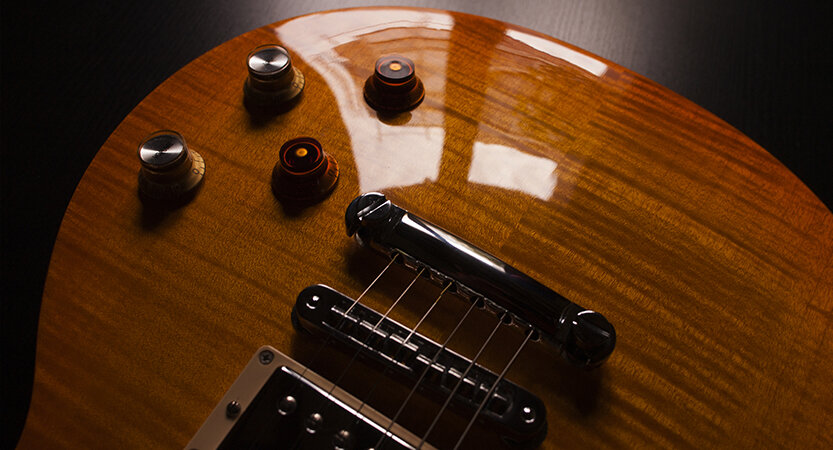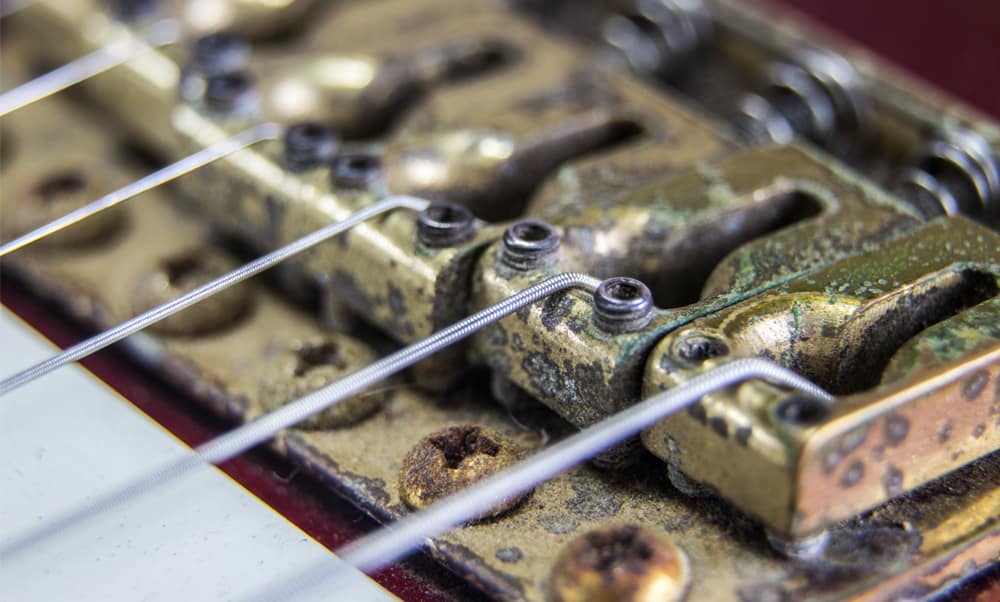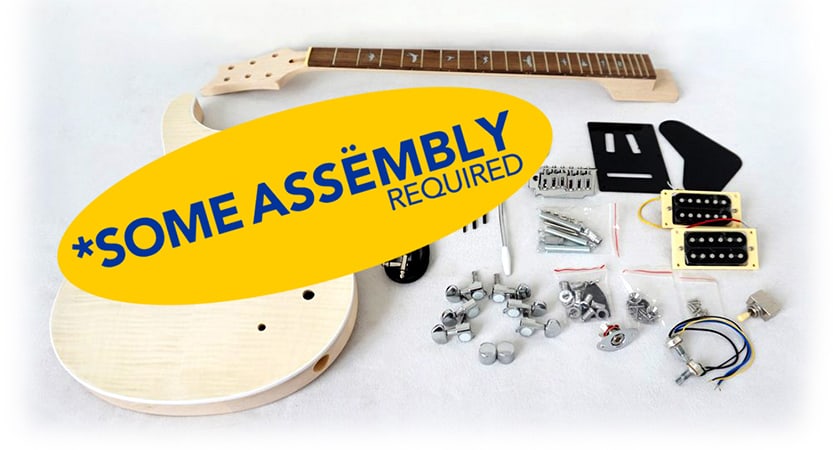Since its invention, the electric guitar has shown just how useful it can be in all genres of music, gaining quick and massive acceptance among guitar players. Today, a lot of music listeners would not even imagine their favorite music come on without the ever melodious tone of the electric guitar. Well, in all honesty, the sweet tone is something amazing, but before they can come on your speaker to spice out songs from your favorite music artists, it goes through a fascinating process.
So How Does the Electric Guitar Work?
The sound from an electric guitar is powered through the process of electromagnetism – more specifically, the electric guitar works by transforming vibrations from its strings into electromagnetic energy, therefore transmitting the electromagnetic energy to an amplifier which in turn produces sound.
The process is not as complex as it sounds – in fact, it is simple to understand and once you do, you’ll be impressed by what goes on underneath the 1931 invention.
There’s certainly a lot of fascinating information about the electric guitar and how it works. You are going to be attracted to the whole process, even if you are not a fan. Here, we will be talking a look at the entire process and a few other things related to it, but before we go on and for proper understanding of the process, let’s look at the various components of this world renowned instrument.
Components of an Electric Guitar
Solid Body
One of the biggest characteristics that differentiate the electric guitar from an acoustic lies in its very body build. Unlike acoustic guitars that are hollow, the electric guitar is thing and solid in its look. Typically, woods are used for the manufacture of guitars as a way to give it warmer tonal quality, but well, the material isn’t such a critical factor in determining the sound of the electric guitar that we all love, definitely not as critical as it is in an acoustic guitar
In fact, George D. Beauchamp, the inventor of electric guitar wrote in his patent that the body of the electric guitar varies considerably in construction, size, and shape. Their materials also vary in a lot of ways, without necessarily taking away the spirit of the invention.
Hollow and Semi-Hollow
It is important to note however that, although the solid body is popular, it is not the only type of guitar body. Other popular guitar bodies include: The hollow body guitar and the semi-hollow body guitars. One major difference that exists between different guitars is that each guitar has a different body type. The Strat for instance is a solid body guitar, the Gretsch Falcon a hollow body guitar, while the ES-355 is a semi-hollow guitar. Builders know that these body types have their unique tone, so they make their pick based on how they want the guitar to sound.
Neck, Frets and String
The neck frets and strings are part of the most important parts of an Electric guitar. Certainly, no guitar will be complete without any or all of these parts. The guitar build consists of six metal strings, running across the neck and fret from the body; its end are wound around the turning pegs. Operation is not too complicated. When a string is pressed at fret, its tension gets temporarily changed, giving out a different note and frequency.
The strings that are found in an electric guitar are not exactly the same with those in an acoustic guitar. Acoustic guitars can work well with steel or nylon string, electric guitars are quite different because they only have to operate on metal strings. It is the magnetic property of the metal strings that passes vibration to the magnetic pickups to produce sound. The strings can easily pass as one of the easily noticeable part of the guitar.
Bridge and Whammy Bar
Different electric guitars come with different styles and designs, but even in their differences, the core parts are made to serve the same purposes across different guitars. The bridge, whammy bar and tailpiece make up the core parts of an electric guitar.
What are they? The bridge and the tailpiece are the parts that hold the strings across the electric guitar’s body. They are usually located parallel to the pickups. The whammy bar is a lever that’s attached to the bridge, and its function is to tighten and loosen the different strings in the body of the guitar, directly distorting the sound and creating a wavering effect.
Pickups
We will not be exaggerating to say that pickups are the electric guitar’s most important part. The pickup comprises six magnets that are wrapped in very thin copper wire. Electric guitars are normally constructed with two or three pickups, with each magnet corresponding to its own particular string.
At a state of rest, the pickup magnets produce stable magnetic field, but once a player strums the strings, the vibration that is produced causes a disturbance to the field and by extension induces a level of electric current to pass through the coil.
The Amp
The amplifier is another important part in guitar playing: oh, you know that already. It is the amplifier that allows the electric guitar to function at its full potential.
How does it work? The current coming from the metal strings goes through the preamplifier first, getting the small electrical signal ready to hit the amp. The main function of the preamp is reduction of noise and any other external sound that may want to interfere with the sound of the electric guitar, powering it enough to reach the amplifying stage. The audio signal is then sent all around a number of digital processor or vacuum tubes depending on what type of amp is being used. The signal is adjusted continuously conditioned until it is clear and loud enough. It is then allowed to go through the amp speaker, from where it reaches our ears.
Principles Guiding the Operation of Electric Guitar
If you understand the laws of electromagnetism in physics, then you will easily understand how electric signals are generated and transmitted in an electric guitar. The laws of electromagnetism states that; the movement of an iron coil inside a magnetic field proportionally causes the generation of electric potential in the iron coil. The simple name used to refer to the arrangement is electromagnets. Yes! Remember electromagnets from earlier in this article? Well, it’s beginning to make sense now. This same principle is evident in the way the electric guitar generates and transmits signals across the guitar’s body when strum. The signal is the amplified to a level of audible sound appropriate for hearing.
Pickups
As highlighted above, magnetic pickups can technically be referred to as small magnets that are packed in fine wire coils. The small magnets are constructed in a manner to produce magnetic field around them. Now, this is how it works: when the user gets to action with the strings, the magnetic field generates a level of vibrating motion strong enough to change the magnetic flux of the field. Refer to the law of electromagnetism, and you’ll discover the change that occurs in the magnetic flux is enough to produce charge in the wire coil.
In most guitars, the magnetic pickup is arranged to pack six individual magnets that are smaller in look, with a distance from the string that can be adjusted with a knob. This simply signifies that the distance affects the strength of the signal.
String Vibration
A player has to note that the different strings are designed to vibrate at different rates. It is the electric charge produced during the vibration in that occurs in the pickup coil that is sent to an electronic circuit. The electronic circuits consist of capacitors and resistors that combine to determine the actual tone of the electric signal. Like we explained earlier, it is at this point that refined signal gets transmitted to an internal or external amplifier, which is directly connected to the magnetic pickups.
So What Does the Amp do?
The amplifier in its turn acts to clear out noise from the electric signal, making it audible enough to make sense in the loud speaker. Electric guitar amplifiers are quite different from ordinary amplifiers; they are not just for producing loud sounds that are clear of noise, but they are also used to bring a little distortion. The distortion is a needed feature for the production of desirable music.
Most modern electric guitars have several circuits that control different tones and volumes. The circuits also help in the control of string vibration and by extension, electrical charge. One thing is sure however, that the higher the number of electrical circuit, the easier it would be to adjust the guitar for better and more desirable sound.
How to Get the Best Guitar Tone
Well, to be honest, there’s a lot to learn about the operation of a guitar. If you are not busy with the basics, you’ll be busy trying to get beautiful tones from a rather complicated setup – trust me, it is really a handful. Even when you’ve mastered the sounds, dialing your preferred tone, may still not give you its best sound. So the question now is what we can do to get it right and not just keep going round in circles without something worthwhile?
Maintenance and Care
The need for proper maintenance cannot be overemphasized. It is in fact the first thing to look at when looking for the best sound. You need to be sure you are adopting the right maintenance techniques. You don’t have to fret about guitar maintenance, because it is actually easy. It just takes a few careful steps to clean and properly condition your guitar. Apart from cleaning, you should also look at the strings from time to time. Taking your instrument to a guitar technician to have them help you professionally set it up or learn to properly do it yourself. Check your pickup heights, adjust the truss rod, check the neck alignment, and file the nuts. In addition, you need to also make sure you are storing the guitar in the right place, where it is not prone to damage from humidity or heat.
Checkout Cables and Connections
It’s an electric guitar, so we expect it to have connections of cables running through them. Allowing the jumpers and connectors to host too much dirt can open the guitar up to noise, spoiling your precious tone. During connection, it is important to keep the cable as short as possible. For instance, what do you need a 100ft cable for, when you’re playing within 10fts from the pedal board? It is important to keep the jacks on the pedals as clean as possible to allow for optimal performance.
Know Your Pedal Board
The number of pedal boards you have in front of you often don’t matter compared to how well you can use them. First, learn to get the connected in a logical sequence, both to encourage easy playing and to get it working at its nest.
Guitar Tone Jargons
Yes, we are talking about how the guitar works, but you may not fully understand all that has been said here if you don’t understand all the guitar jargons we’ve been using once in a while. And yes, you also want to sound like an expert when you talk to other players. There are a lot of such terms, but we will be listing and explaining the most used among them, so that you’re in tune with guitar discussions.
- Articulate: Refers to the level at which each not can be distinctly heard without smearing.
- Bite: Used to refer to a state that’s close to throaty. At this stage, the note is nearing breaking up, but is still articulate.
- Bright: Refers to high-end frequencies. Depending on particular situation, this can either be good or bad.
- Brittle: This is a state of excess treble, especially when it occurs in the upper high-end. Brittle can easily cause the listener some level of discomfort.
- Crisp: A clear treble that often occurs on the high-end of high frequencies.
- Dark: This occurs on the low side of treble. It is a far less high-end.
- Muddy: A state of unintelligible sounding that involves too much mid-range.
- Nasal: This occurs when there’s excess of mid-range frequencies, to the point where it begins to lose articulation.
- Scooped: This is actually the direct opposite of nasal and involves less power in the mid-range frequencies.
Guitars are one of our best instruments. They are exciting, and with a fascinating history to it, every music lover will love to have one. However, understanding how the instrument works will help you to properly appreciate the instrument that has become a delight in modern music
Related Questions
Can an electric guitar be played without being plugged?
Well, an electric guitar can be played without being plugged in, technically, you will just not hear it. We’ve discussed above how important an amplifier is to the operation of a guitar, so from a technical point, without an amp to back the sound up, the sound it produces is likened to that of an acoustic guitar, but without volume. You will be hearing the string Acoustic Vibration, not the Magnetic ones.
Does the electric guitar work in a different manner from the acoustic?
Of course, the electric guitar is built to work differently from the acoustic. While an acoustic guitar will normally produce sound by a process of vibrating the strings on the board, the electric guitar works through a process of converting the vibration from the string to electromagnetic energy. Definitely, electric guitars are easier to play, although acoustics are far more affordable.

